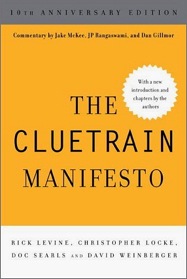Ok, time to look back at my first week at my new job. This week (and the next few) I was very busy with actually only one thing: conversations. To discover who I work with and my company VLC, I had conversations with my colleagues. These conversations are also about what I will be working on and the value proposition of VLC, EIM. My goal for the next weeks is to move these conversations beyond VLC.
So, based on some conversations, what do I think EIM is?
EIM is a holistic way of looking at information. Information is created, shared and stored in a every part of the organization. Given that information plays a very important part in organizations these days, information needs special attention. EIM gives information the attention it needs, compared to Human Resource Management does. EIM brings down barriers inside organizations, the flow of information is an absolute necessity. EIM brings together information that is stored in documents, unstructured information, and information stored in databases, structured information, together. Workers can create better knowledge or make better decisions when the information they use is more complete, accurate and relevant. EIM does not only combine unstructured and structured information but also filters it to ensure workers are not overloaded with information.
This is just the beginning of my grasp of EIM. In my next posts I will be working to get my ideas more concrete and also look at ways to make your EIM dreams come to life!
